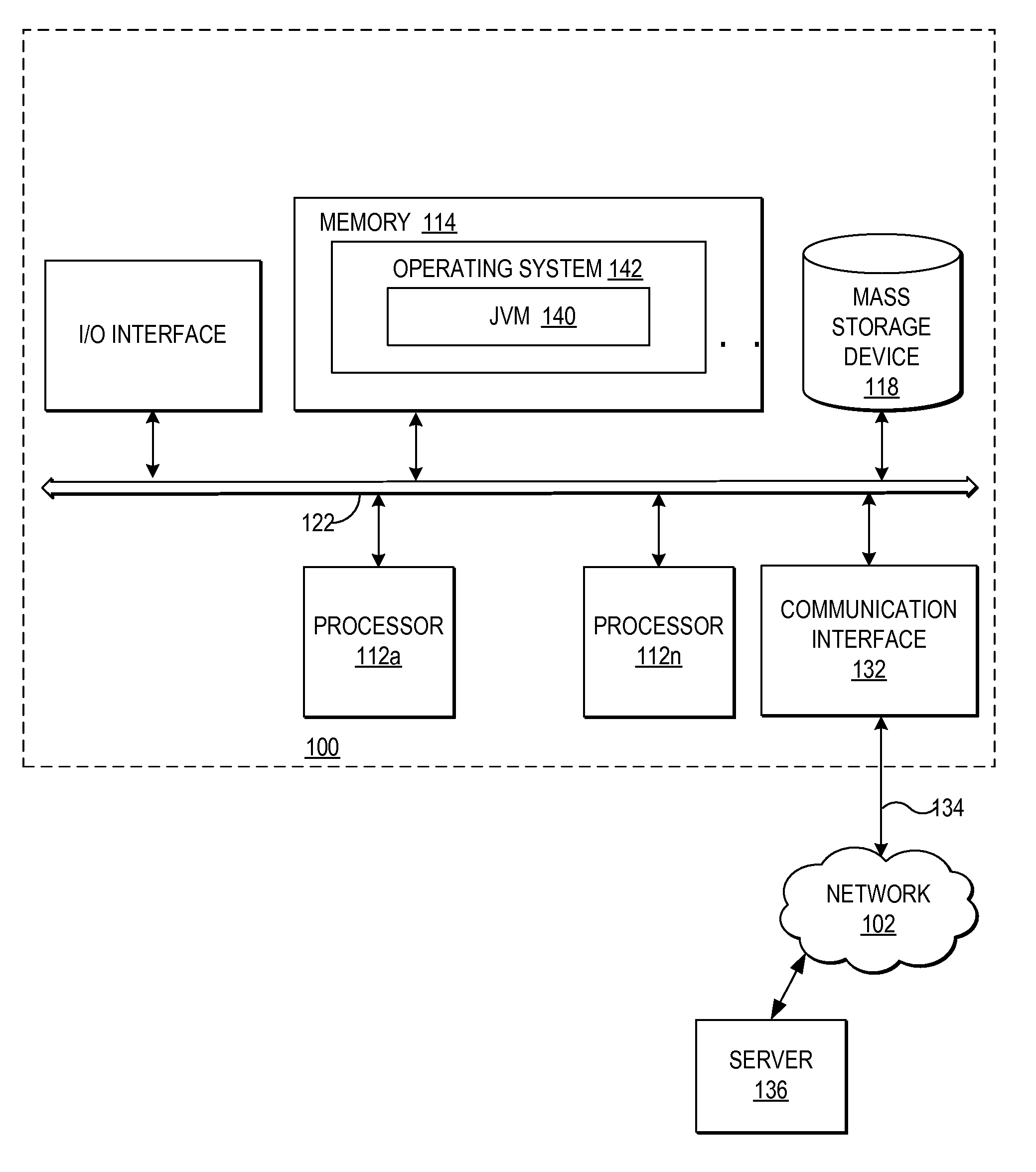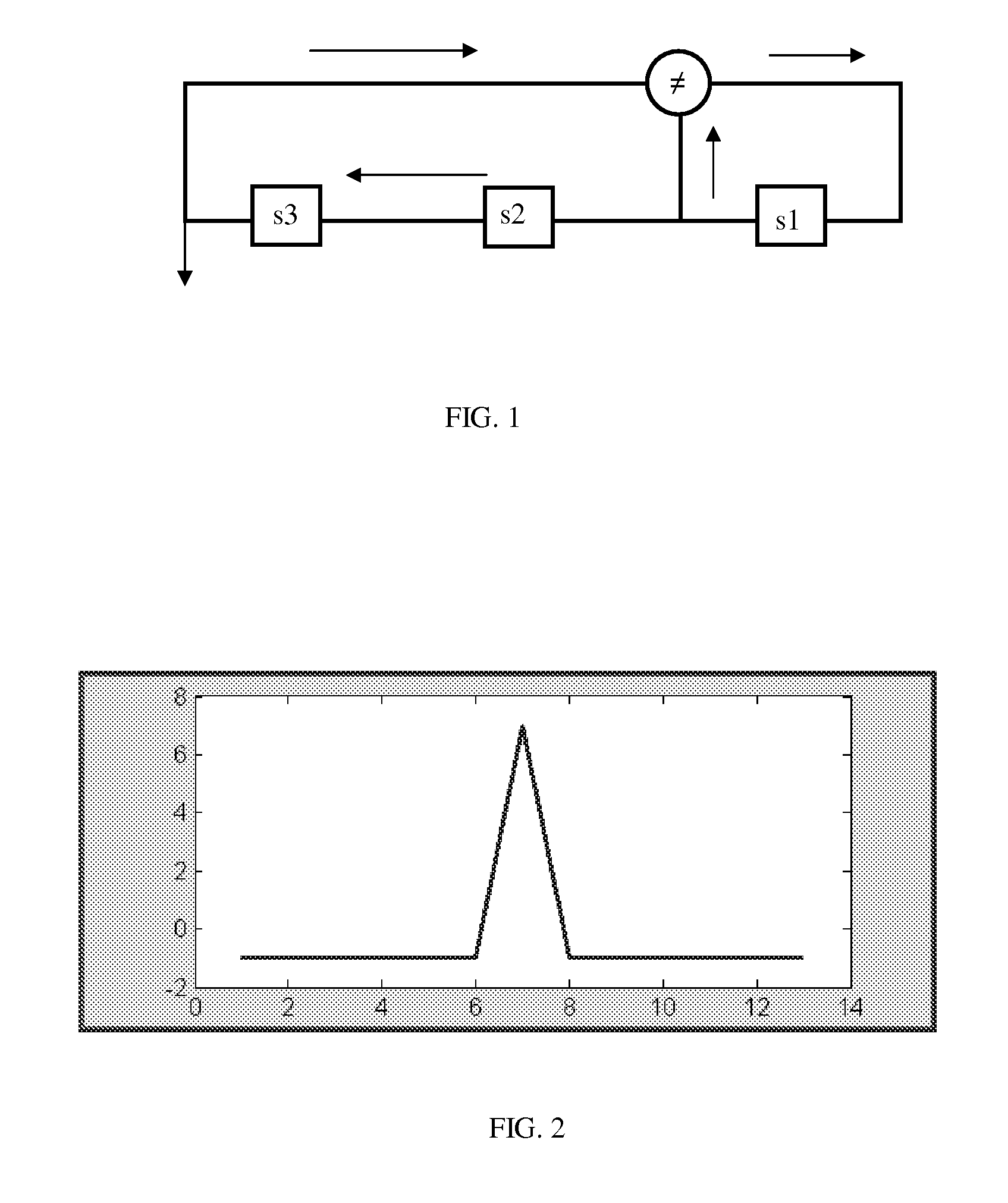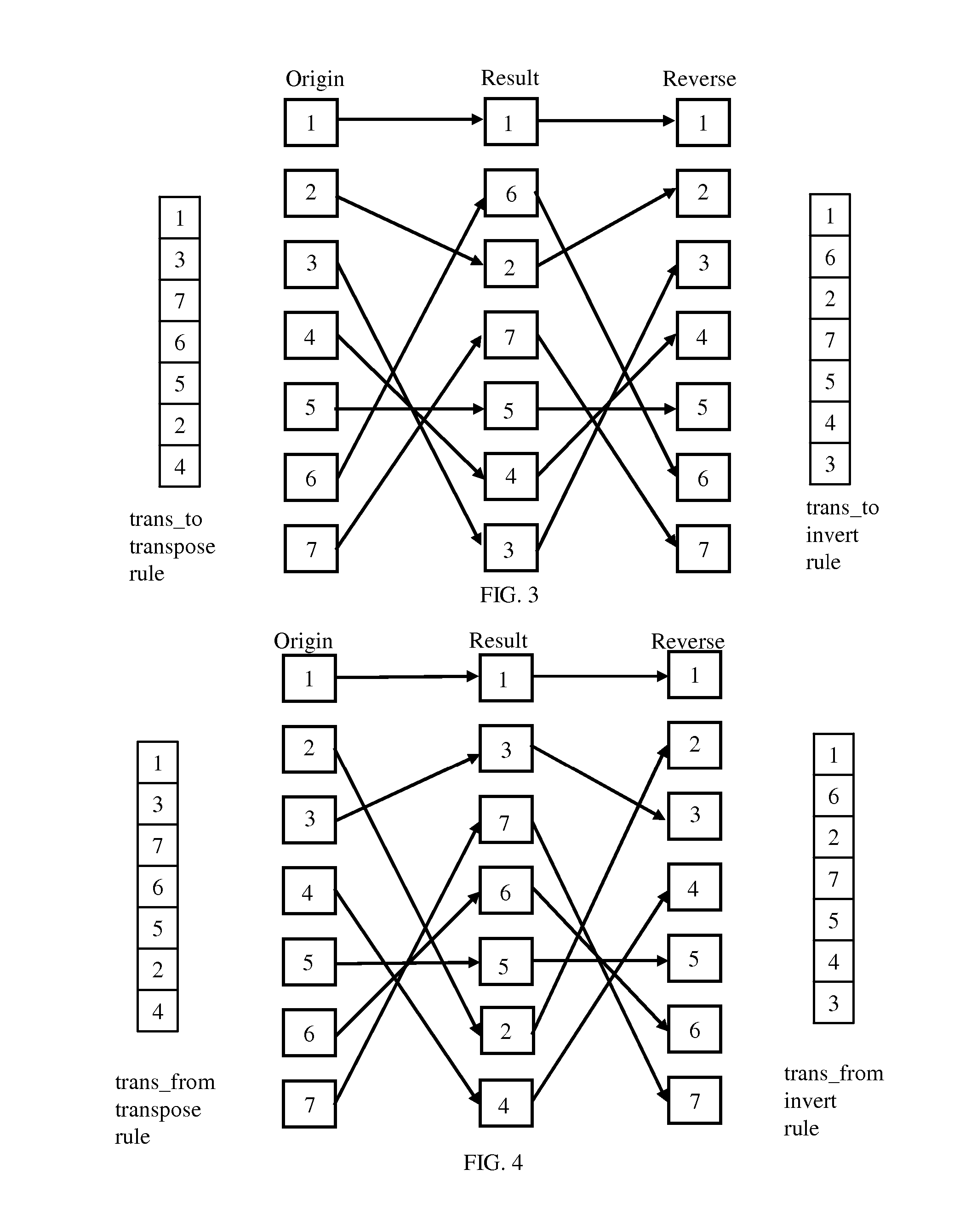Encipherment of digital sequences by reversible transposition methods
a digital sequence and reverse transposition technology, applied in the field of encoded binary and non-binary digital sequences, can solve problems such as problems such as occurrence of b>0/b>, one potential problem, and transposition sequences that cannot be transposed
- Summary
- Abstract
- Description
- Claims
- Application Information
AI Technical Summary
Problems solved by technology
Method used
Image
Examples
Embodiment Construction
The Related Art
[0042] There are different ways to transpose symbols in a sequence or a word comprised of n symbols. In general one can create transpositions by selecting one of the possible reversible permutations of a word of n symbols. A symbol may be represented by a single element or a number of elements. A symbol as one aspect of the present invention will be assumed to being able to be represented by a single element, keeping in mind that it can in actuality be represented by a plurality of elements. A word or sequence of n symbols has n!=1*2*3*4* . . . *(n−1)*n possible permutations. A sequence of n symbols may comprise p different symbols wherein p<n. In that case some permutations are of course identical.
[0043] A transposition rule may be created by a pseudo-random number generator. A reversible transposition rule for the transposition of n symbols may be considered an n valued reversible inverter.
[0044] Pseudo-random sequences as transposition rules.
[0045] The invento...
PUM
 Login to View More
Login to View More Abstract
Description
Claims
Application Information
 Login to View More
Login to View More - R&D
- Intellectual Property
- Life Sciences
- Materials
- Tech Scout
- Unparalleled Data Quality
- Higher Quality Content
- 60% Fewer Hallucinations
Browse by: Latest US Patents, China's latest patents, Technical Efficacy Thesaurus, Application Domain, Technology Topic, Popular Technical Reports.
© 2025 PatSnap. All rights reserved.Legal|Privacy policy|Modern Slavery Act Transparency Statement|Sitemap|About US| Contact US: help@patsnap.com



